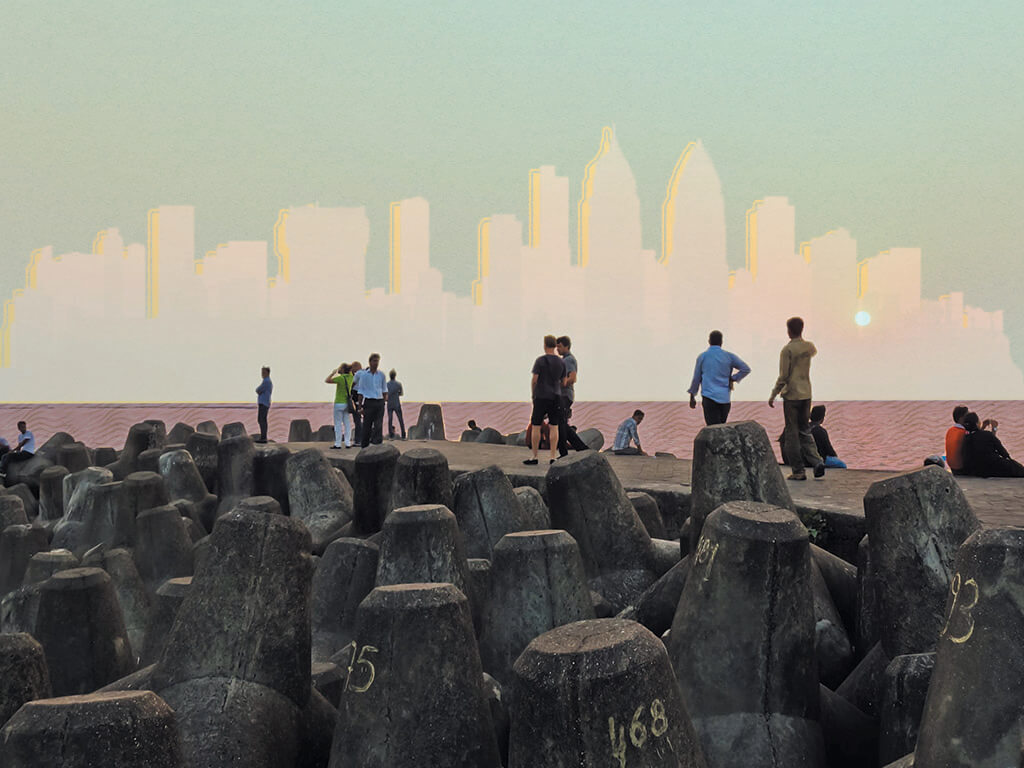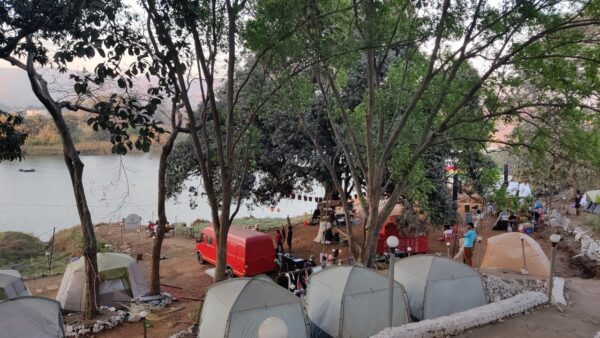The coastal megacity of Mumbai, where over 20 million people reside, is facing extreme climate vulnerability and risk. It is a city built on land reclaimed from the sea. While it is the city of dreams for many, its geographical location, population growth, rapid urbanisation, housing crisis and traffic congestion makes it vulnerable to severe impacts of climate change, from frequent cyclones and unprecedented floods to sea level rise. Its resilience is already being tested to its limits.
Mumbai, India’s commercial capital, houses one of Asia’s richest municipal corporations. The Brihanmumbai Municipal Corporation (BMC) has access to capital – it announced a budget of Rs 59,954.75 crore for the financial year 2024-25[1] – and labour, which it has strategically used for economic and political gains, but not necessarily to address climate change.
Through an investigation of the climate risks faced by Mumbai, infrastructure development, adaptation plans by the BMC as well as the role of local-level initiatives and native communities, this research paper highlights the resilience and adaptive capacity of the city. More specifically, it explores the roles of actors from the BMC, NGOs, civil society groups and communities in climate adaptation strategies planned and used in the city.
Urban flooding and extreme temperatures
Built on land reclaimed from the sea, Mumbai is sinking. Studies at IIT-Bombay have shown that Mumbai is sinking at a rate of 2 millimetres per year.[2] Every year, it witnesses cyclones and intense flooding during monsoon months. It lacks an updated drainage system which can tackle the heavy monsoon while pollution blocks its rivers from acting as a natural drainage system. With rising sea level and unfettered construction, the city could face a climate catastrophe soon.
Coasts are the most productive areas of seas, and the most immediate impact of climate change can be seen across coastal cities (Ninawe et al, 2018). According to the World Urbanisation Prospects, 39 of the 63 urban areas with populations greater than five million are located in areas with a high risk of flooding, cyclones or drought; 72 percent are located on or near the coast, two-thirds are in Asia. (Johnson et al, 2015) Densely populated coastal cities like Mumbai are likely to experience climate change impacts most intensely, putting millions at risk(Bhatt, P. 2017).
Exponential growth in the last three decades has transformed Mumbai’s landscape; construction has been allowed at an unprecedented pace. The city was naturally protected from cyclones and flooding due to its vast mangrove cover, but urbanisation caused massive depletion of mangroves; large real estate properties stand there now. Between 1990 and 2001 alone, around 40 percent of the city’s mangrove cover was wiped out (Bhise, 2004).
Flooding is not the only issue; Mumbai now has to deal with extreme weather too. The analysis of the India Meteorological Department (IMD) data has ‘shown a steady rise in air temperature over the past 50 years’ (Singh, 2021). Winter months in Mumbai are as hot as summer months were a decade ago.[3] Summer temperatures have risen exponentially, reaching new records every year.[4] The rainfall is heavier than before. An ever-rising population and infrastructure growth have caused higher demand for water which the city struggles to match (Acharya, 2023). Given the rise in temperatures, this is a concern.
Mumbai has a large income gap[5] amongst its residents. With over 20 million residents, Mumbai has among the highest density for any city in the world[6] The ‘city of dreams’ rides on the shoulders of its middle- and lower-income population. From the booming recycling business in Dharavi to the ever-growing service sector, Mumbai is the employment hub; opportunities draw migrant workers from around the country. However, the city’s exorbitant living costs keep many at basic wage (Kaushik, & Campbell 2023).
Much of Mumbai’s population live in slums spread across the city (Jamkhandikar, 2020). These are most vulnerable to climate risks. Dharavi, one of the largest slums, houses an estimated one million people[7] Although located in the heart of the city, its residents lack basic amenities such as sanitation and potable water. Slum residents, usually from lower castes and minority groups, are economically vulnerable and, therefore, highly susceptible to flooding and extreme temperatures.
The native fishing community of the city, the Kolis, are also vulnerable. Over 2,00,000 Kolis[8] live in the many fishing villages of the city (Schapova, 2019). As the growing impact of climate change manifests along the coastline, they are more at risk than ever. Frequency of cyclones has increased, sea levels have risen, and the city’s growing population continues to stretch out to the hills and the coast (Chandrashekhar, 2022).
Without proper adaptation plans in place, climate change impacts can be disastrous for megacities like Mumbai. What is Mumbai’s resilient adaptation framework?
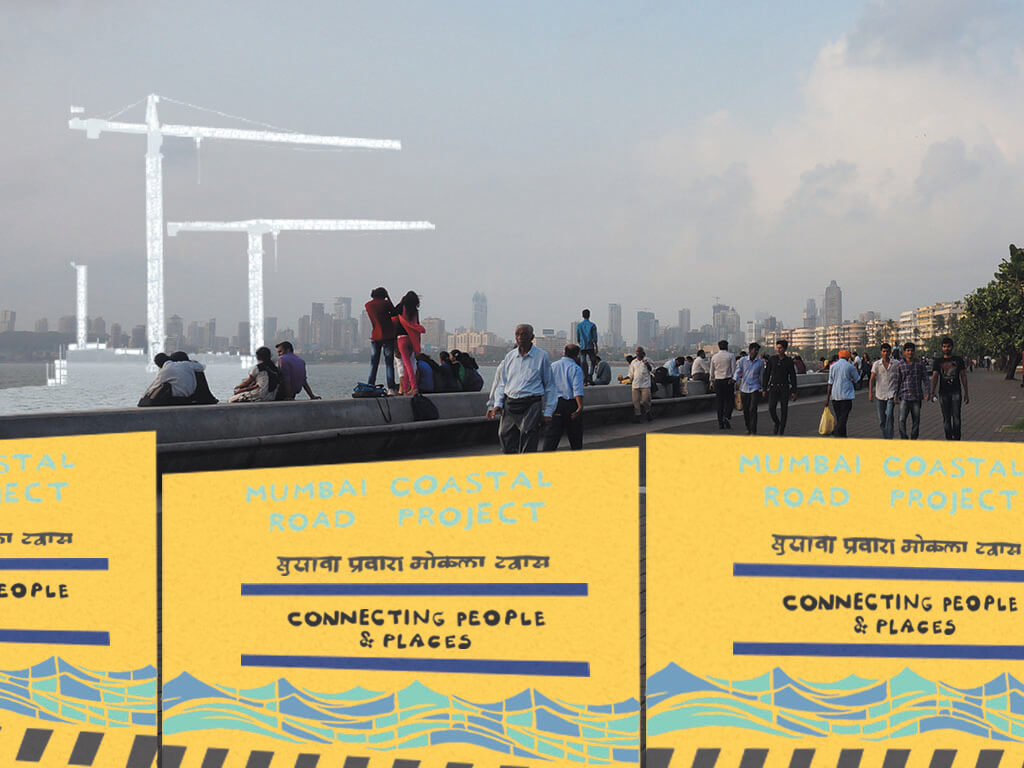
The Coastal Road: Unsustainable infrastructure
Mumbai sits on one of the most expensive real estate lands in the world. New metro lines[9] are being built, highways have been expanded, and roads are being constantly re-laid. Space for public transportation is limited and car dependency is at a peak. To ostensibly ease the congestion, the BMC began the development of the Coastal Road along the western coastline. It is an 8-lane, 29-kilometre freeway which will connect south Mumbai all the way to western and northern suburbs (Acharya, 2023).
The project involves reclaiming land from the sea, and, therefore disrupting the fragile ecosystem. There are many controversies surrounding it including concerns amongst the fishing community. It faced obstacles due to legal issues and has been condemned by citizens, especially the Kolis. It did not get Coastal Regulation Zone (CRZ) clearance from India’s Ministry of Environment, Forest and Climate Change (MoEFCC); the case was presented to the Bombay High Court and later to the Supreme Court of India. To protect coastal zones, the CRZ notification of 2011 prohibited reclamation of land for road projects, but eventually, an exception was made for this project. It displaced fishing communities who no longer have access to small harbours to dock their boats, or direct access to the sea front for shallow fishing. The first phase of the road was opened in March.
The need to build infrastructure projects at the cost of environmental protection is concerning. Building this may not be the best decision for a city facing flood risk; the Intergovernmental Panel on Climate Change (IPCC) report termed the Coastal Road “maladaptive infrastructure”. Although various scientific reports (Ranger et al., 2010; Zimmerman et al., 2023) have highlighted that Mumbai may soon face more frequent climate related disasters, the government and private actors have not taken active steps towards adaptation and resilience. The BMC has spent a staggering Rs 12,721 crore into the Coastal Road[10] putting vulnerable communities at greater risk and damaging sustainability.
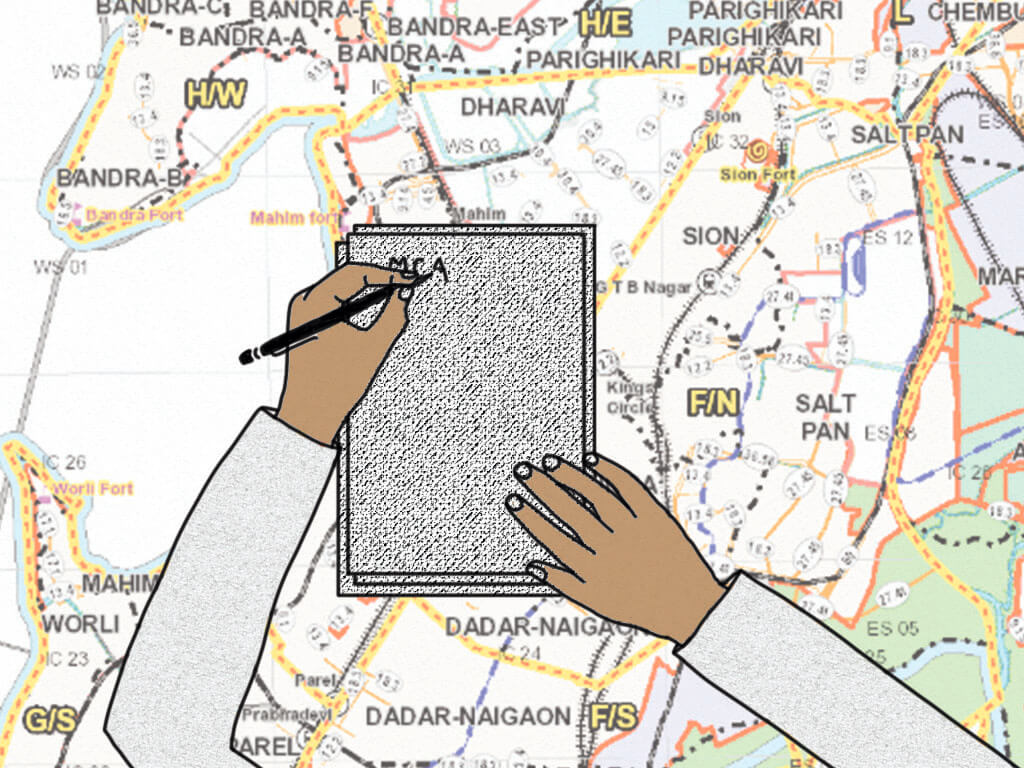
Institutional actions and local initiatives
Cities are major contributors to carbon emissions and also extremely vulnerable to climate risks. The willingness and capacity of local governments, businesses, and civil society organisations to bring about significant change at the local level determines whether cities will actually mitigate vulnerability to climate change (Johnson, 2015).
Urban spaces face the challenge of rigidity of infrastructure such as modes of transport, fossil fuel dependency, and waste management developed over the years. Change is met with resistance and obstacles. Climate adaptation entails both monetary and political costs. In cities like Mumbai, policy introductions and changes are intertwined with political power and the ability to mobilise citizens. Active participation and dynamic policy implementation by municipalities and other governing bodies is essential. It is necessary for Mumbai’s urban officials to commit to the implementation of the climate action plan. It is also essential for citizens to be a part of this change.
- Mumbai Climate Action Plan: Institutional steps
In consultancy with C40 Cities network, the BMC formulated the Mumbai Climate Action Plan (MCAP) in 2022 conforming to the Paris Agreement goals. The MCAP delivers on both climate mitigation and adaptation. Experts in urban sustainability, universities and research organisations, residents, international organisations, and municipality officials contributed to it. Launched by the then Chief Minister of Maharashtra, Uddhav Thackeray, it set out short, medium and long-term climate goals aimed at a net-zero emission target by 2050 (Bhalerao, 2022).
It addressed flood resilient infrastructure and improved air quality monitoring. Through a focus on six sectors – Energy and Buildings, Sustainable Waste Management, Sustainable Mobility, Urban Green and Biodiversity, Air Quality, Urban Flooding, and Water Resource Management — the ambitious plan set out priority actions, deadlines, involved private and public stakeholders, and called for national and international financing (C40 Cities, 2023).
It is an official response to Mumbai’s climate crisis and it must be analysed.[11] The MCAP is arguably inclusive and has addressed the need for Mumbai to implement adaptation and mitigation measures. By setting short-term deadlines for specific goals, it has garnered the attention of stakeholders and attempted necessary changes.
However, its implementation has been tardy and its effectiveness is yet to be judged. One of its greatest limitations is its non-statutory character (Indorewala and Wagh, 2022). The MCAP has an advocacy framework; it is not legally binding. Agencies and actors involved in the various plans undertaken are not answerable. With a dynamic political scenario, the success of the plan lies in the hands of changing political equations, municipality bureaucrats and commercial stakeholders.
The MCAP also fails to consider an important factor which is a recurring motif in Indian policy making; institutions in power are unlikely to act against projects that benefit them (Indorewala and Wagh, 2022). The Maharashtra Regional and Town Planning Act allows the Maharashtra government to alter state and city plans, and even halt Development Plans. The work initiated under the MCAP can be deemed unnecessary and halted. The MCAP, ironically, was unveiled when the BMC itself pushed for the Coastal Road disregarding the protests by multiple environmentalists, activists and natives, and legal obstacles. The CRZ notification of 2011 was modified to allow an ‘exception’ (Indorewala and Wagh, 2019) for this work to continue. The BMC failed to address this contradiction in climate change mitigation; much of its net-zero claims seem a façade to hide unsustainable development such as the Coastal Road.
The MCAP was susceptible to political changes too. It was introduced and promoted by Thackeray who no longer heads the government. The MCAP was steered by his son and then cabinet minister (tourism and environment) Aditya Thackeray, and was a flagship project for the budding politician. Uddhav Thackeray has since resigned (The Hindu, 2022). The incumbent chief minister Eknath Shinde, former colleague of the Thackerays who split the Shiv Sena party, has not shown interest in implementing it. Politics and policy making are inherently intertwined in India; the shift in political power in Maharashtra has hurt the climate plan. More importantly, no plan or legally binding act exists to enforce adaptation and mitigation in Mumbai.
- Local-level initiatives and non-state actors
It is evident that institutional actors in Mumbai are failing to implement the plan for climate adaptation and mitigation. At times like these, local actors and communities play an essential role. Community groups who actively contribute to mitigation and adaptation efforts include workers in the informal sector. For example, the ragpickers form an integral part of an informal business which has kept Mumbai’s system functioning for decades.
The BMC Environmental Report last year[12] showed that Mumbai generated nearly 6,300 tonnes of waste every day. Only half of which is collected and sorted by the municipality (Boyd and Ghosh, 2013) . Large amounts of segregation are done manually by ragpickers who sort and collect recyclable matter, and sell it to middle men, who then sell it to factories. Without this, the city would be witnessing a much worse waste management system. Ragpickers, however, continue to live in poverty and are also highly vulnerable to floods and heat. In an attempt to formalise, the BMC introduced the ‘Dharavi Project’ which provides ragpickers with identity cards associating them with the civic body which has helped to an extent.
In India’s ever-changing political and social dynamic, it is ‘critical to install systems that operate at the microlevel of climate governance. Failures of institutions and social systems must be solved by alternative and ingenuous solutions, particularly mixed-method systems’ (Boyd and Ghosh, 2013). Mumbai’s ragpickers are an example of mixed-method systems in climate adaptation. The city’s culture of community and civil society has always been strong, it is more essential now than ever before.
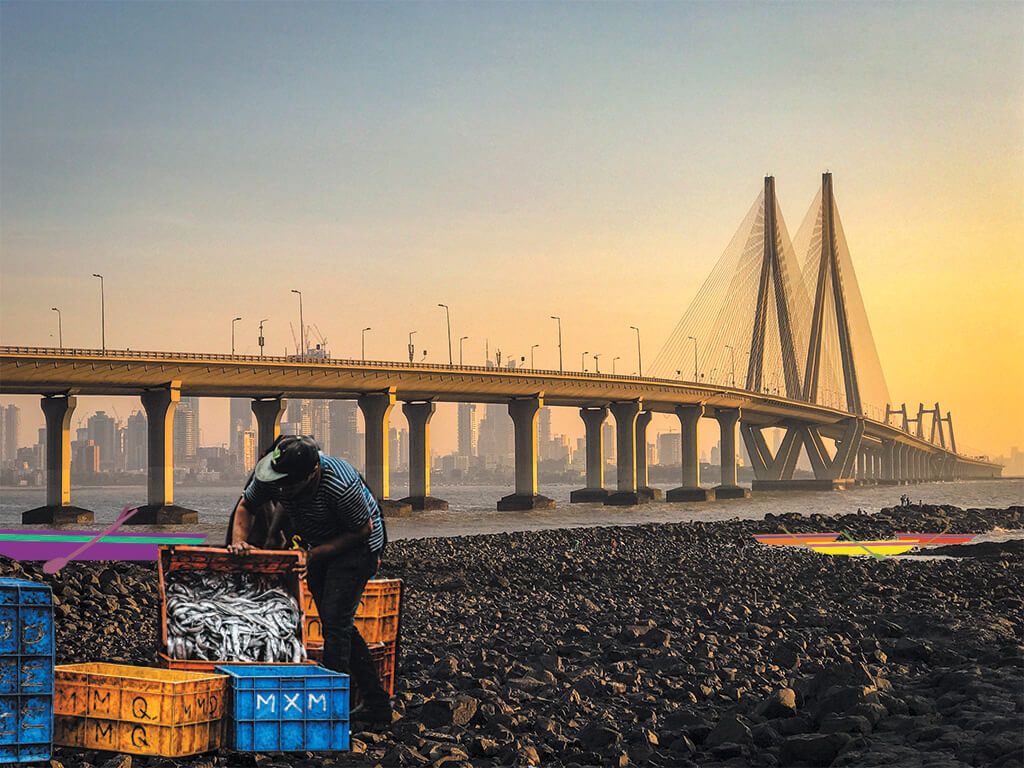
Another important player is the Koli fishing community. Pushed to the brink due to polluted waters and overfishing, it is facing a crisis. Without institutional aid, the community’s organisations such as the National Association of Fishermen and Gorai Fishermen Cooperative Society have contributed greatly to the protection of mangroves and creeks in the city (Boyd and Ghosh, 2013). The community also formed self-help groups to aid affected families.
Other groups have used the media to draw attention to the importance of mangrove protection. In Dahisar, citizens and the Bombay Environment Action Group got a Supreme Court order directing a builder, who had built bunds to stop the flow of seawater to a mangrove patch, to restore the 400 hectare of wetlands (Boyd and Ghosh, 2013). Later, the state government took over maintenance of the wetlands, but the community continues to monitor restoration work.
Urban governance in Mumbai has not been restricted to institutional actors; citizens have been a part. In the light of recent climate change induced risks, it is more important than ever that communities be considered as essential actors. Civil society organisations and local actors have also actively advocated for disaster risk reduction (DRR). Traditionally, DRR and climate adaptation plans have been developed separately without overlap. However, Mumbai has involved local-level actors in managing flood risk reduction. As the city witnessed increased waterlogging and floods, it prompted action from communities.
Low lying areas which are prone to flooding are often managed by local-level initiatives. State, various non-state actors like individuals, communities, civil society groups and the private sector have been essential in coping with annual flooding and major flood events at local level in Mumbai (Zimmermann et al., 2023). Many residents of low-lying areas have an experience-based understanding of flooding and formed informal groups to prepare for it. In certain suburbs where floods have been more frequent than before, community groups have ‘contributed significantly in emergency situations where undertaking relief and rescue measures through formal channels via government was difficult’ (Zimmermann et al., 2023).
Over the last few decades, NGOs have also played a role in disaster management and climate resilience too. AGNI (Action for Good Governance Networking in India) often provided aid in rescue operations. CARE India, actively distributes disaster relief funds to vulnerable sections of society, including in 2019 floods(CARE India, 2021). Local level initiatives, therefore, play an important role in climate change mitigation and adaptation.
Conclusion
Mumbai, one of the fastest growing cities in the world, has geography which also makes it one of the most vulnerable cities to climate change. The city’s urban governance architecture has to formulate and implement policies and plans to deal with the inevitable impact of climate change. Mitigation and adaptation should be at the forefront of Mumbai’s urban governance. However, institutional actors like the BMC have failed to implement adaptive policies necessary for building climate resilience. Top-down policies and a non-statutory plan like the MCAP have not contributed enough towards capacity building.
On the other hand, local community and citizens’ initiatives have been impactful. Mumbai’s civil society, NGOs, and specific communities have played an essential role in adaptation and mitigation – and continue to do so. It is essential to note that while it is critical for local actors to be involved, the need is for scaling up adaptation initiatives by institutional actors and the implementation of climate adaptation policy. It is the failure of institutional frameworks that has forced informal or local actors to step in.
While NGOs and civil society in Mumbai provide excellent examples of the importance of non-state actors, it is inadequate adaptation and mitigation. Non-state actors cannot be a replacement for institutions and governments. Without active action from governments, Mumbai and its inhabitants will experience severe climate calamities in the future.
References:
- Johnson, C., Toly, N., & Schroeder, H. (2015). Urban Resilience, Low Carbon Governance and the Global Climate Regime1. In The urban climate challenge: Rethinking the role of cities in the global climate regime (1st ed., pp. 3–24). essay, Routledge Taylor & Francis Group.
- Ninawe, Adnan, Lakhan, R., & Mondol, S. (2018). Chapter 9 – Impact of Climate Change on Fisheries, Biotechnology for sustainable agriculture: Emerging approaches and strategies, (pp 257–280). Woodhead publishing.
Ruchira Paul is an intern at the International Transport Forum at the OECD and is currently pursuing her Master’s in Urban Governance at Sciences Po, Paris. She grew up in Mumbai and Kolkata, and is deeply passionate about cities, urban development and climate change. She has a keen interest in South Asian and South East Asian cities, and hopes to bring attention to the climate crisis faced by coastal cities.
All illustrations are by Shivani Dave, architect turned writer-illustrator interested in exploring the intersection of architecture and social sciences. After her undergraduate study at the School of Environment and Architecture, Mumbai, she completed a postgraduate diploma from the London School of Journalism. At Question of Cities, Shivani researches, writes and visualises stories.

